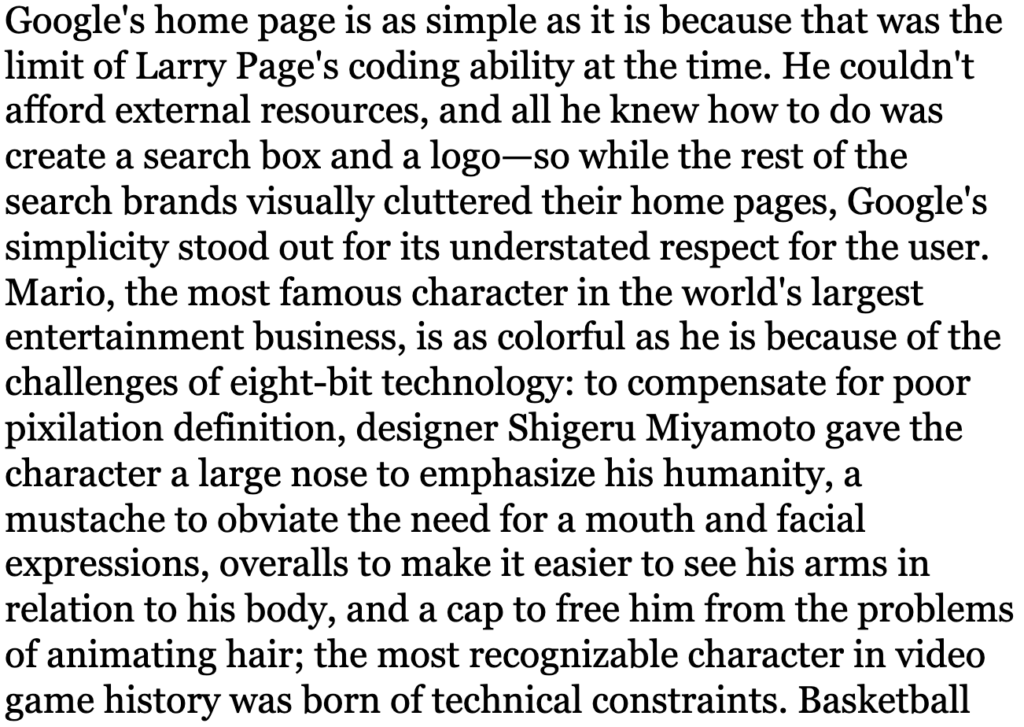Constraints have a bad reputation. Why not? Constraints restrict us.
Stelios Haji-Ioannou (founder of Easyjet) – “Making flying as affordable as a pair of jeans”.
Dhirubhai Ambani’s vision – Making a mobile call as cheap as a postcard.
Some people gave up due to these constraints (cheap as postcard). Some converted these constraints into their strength.
We started GreyB in 2008. While growing GreyB from zero to 250 people now, I realized that the opposite is true.
Constraints are good.
I would not exaggerate if I say that in the last 15 years, every day was different. Every day there was a new problem to solve. Whenever you set a goal, every day you will come across a new constraint that will stop you from moving ahead.
I never knew there could be so many varieties of problems. I would have not reached where I am today if I would have made not changed my way of thinking.
Today, I want to tell you how I changed my mind to reach here.
Creativity and innovation are the foundation of organizations’ competitive advantage. Companies that fall in love with constraints go on to build great things.
Cars that can go fast with less fuel.
Fast food that is healthier.
An electric vehicle that can travel 500 miles without charging.
A hotel chain that is luxury but still affordable.
Psychologist Timothy says –
If we believe constraints will limit us, they will.
Constraints are restrictive but if you look at them from a different angle they can be used to stimulate new approaches and possibilities.
If you apply this thinking to your whole team, you can build an unstoppable constraint-driven culture. If you do not have this culture, people slowly figure out ways to avoid constraints at work.
According to studies, when there are no constraints at work, complacency sets in, and people follow what psychologists call the path of least resistance – they go for the most intuitive idea that comes to mind rather than investing in the development of better ideas.
How does constraint help with better ideas? They stop us from getting good ideas.
I read the book ‘A beautiful constraints’ a few years back. There I found an interesting story of the creation of Mario.
I am a 90s teen. I grew up playing the game Mario. Do you remember him –

That book gave an interesting example of loving constraint –

Here is another example –
A beer company launched in recession lacked a marketing budget. They traded equity for cash. This increased loyalty amongst customers and it became the fastest-growing food-n-drink brand in the UK.
People behave extraordinarily and come up with innovative products when they stop fighting with constraints.
The founder of Aarvind eye hospital’s ambition was to deliver high-quality eye care to the mass market in India at a fraction of cost. Try to re-read the previous line and look at the number of constraints in it. Now notice the word ‘ambition’. His obsession with efficiency leads him to emulate McDonald’s assembly line in his hospital. Now Aarvind hospital performs half a million eye surgeries every year.
Here are 5 Mental hacks that will help you build a strong inventive mindset –
Don’t be a victim
We react to constraint as a limiting force. We act as victims whenever we face a restriction. Do not think this is happening only to you or someone has put these restrictions to stop you. They are part of nature.
Control your Assumptions
Are we aware of the foundational assumptions that are no longer best for the future? Organizational biases and priorities? The most significant constraints we face may not be external ones but they may be internal ones in our mind. Be open minded to perosnal, cultural and procedural biases and you will start loving problem-solving.
Ask propelling questions
Propelling questions pushes us off the standard path we have become used to at our work. Rather than saying ‘How can we build this with this constraint’ say ‘There should still be a way to get this done’.
Your question should showcase your ambition to achieve your goal no matter what.
CAN-IF attitude
In your discussion, ask everyone to start with ‘We can, if’ instead of ‘We can’t, because. This small change will keep the discussion in the right direction.
Grit
Inventiveness starts when a question/emotion meets ambition.
Connect the need to transform the constraint with an emotional reason why it matters to us. Otherwise, you won’t have stubborn adaptiveness and tenacity when our initial solutions will hit the roadblock.
Look at people
Look at how people in other industries are solving the problem.
In the end, I want you to practice this –
Moving from victim to a stage where you refuse to accept that constraint (like less marketing budget) will stop you from doing your job.
Problem-solving can be learned. Inventiveness is not an innate ability.
I promise if you can bring this change in your way of thinking you will be able to bring these change in your organization –
Enhance profitability
Create competitive advantage
Create better products and lower prices for consumers
Retain employees
Reduce cost of office rental
The next time you struggle with innovation, take a look at your constraints structure. Instead of blaming them, frame them as creative challenges.
If you want to keep yourself updated with how you can be more inventive, you can subscribe to our newsletter here –


